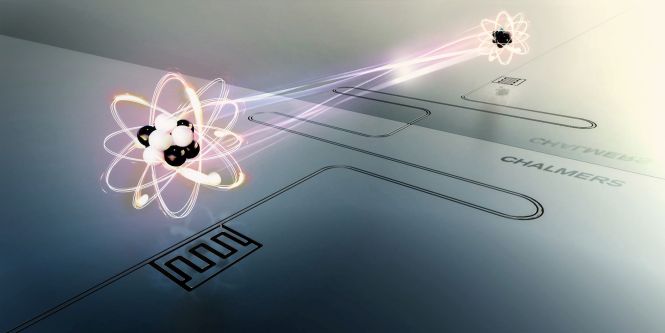Researchers at Chalmers University of Technology have figured out how to extend the lifetime of an atom ten-fold by positioning it in front of a mirror.
Now, there are a couple of caveats with this announcement. For one, the atom itself is artificial — it’s actually a superconducting electrical circuit on a silicon chip, designed to act like a natural atom; that is, it can be charged with energy, whereupon it emits said energy in the form of light particles. When it’s depleted, so too is it’s “life”.
The mirror, meanwhile, is actually a short circuit that mirrors the “atom’s” behavior. A scenario such as this one here, that is, an “atom” interacting with its “mirrored self”, changes the amount of vacuum fluctuations to which said atom is exposed to; this, it turns out, directly impacts the lifetime of the atom.

Furthermore, the distance at which the atom is interacting with the mirror impacts the level of influence the vacuum fluctuations have on the atom; this too, influences the life expectancy of the atom.
“We have demonstrated how we can control the lifetime of an atom in a very simple way,” says Per Delsing, Professor of Physics and leader of the research team. “We can vary the lifetime of the atom by changing the distance between the atom and the mirror. If we place the atom at a certain distance from the mirror the atom's lifetime is extended by such a length that we are not even able to observe the atom. Consequently, we can hide the atom in front of a mirror,” he adds.
In terms of what the group’s been able to prove thus far, the maximum lifetime increase for an atom is ten times more than if the mirror is not there.
“The reason why the atom “dies”, that is it returns to its original ground state, is that it sees the very small variations in the electromagnetic field which must exist due to quantum theory, known as vacuum fluctuations,” says Göran Johansson, Professor of Theoretical and Applied Quantum Physics and leader of a group who theorized how the atom’s lifetime varies depending on its distance to the mirror.
Worth noting: this system is also very good at measuring vacuum fluctuations, which are otherwise pretty difficult to measure.
The team’s findings were published in Nature Physics : Probing the quantum vacuum with an artificial atom in front of a mirror.
Advertisement
Learn more about Electronic Products Magazine





